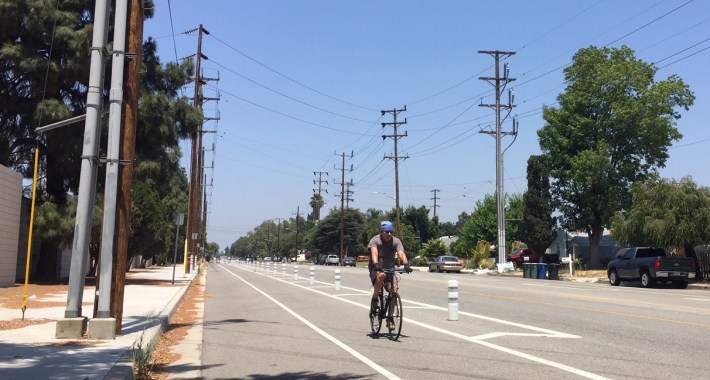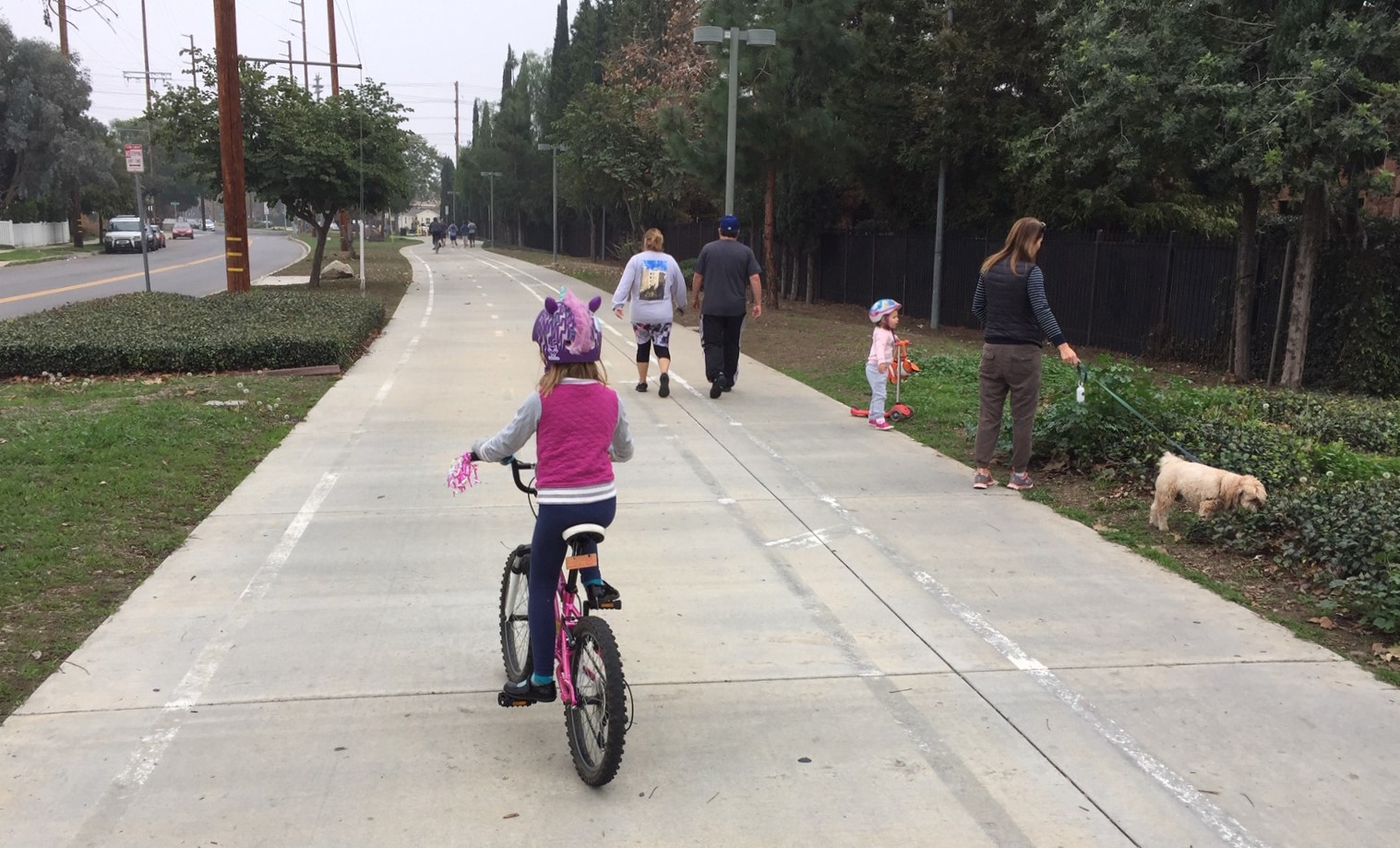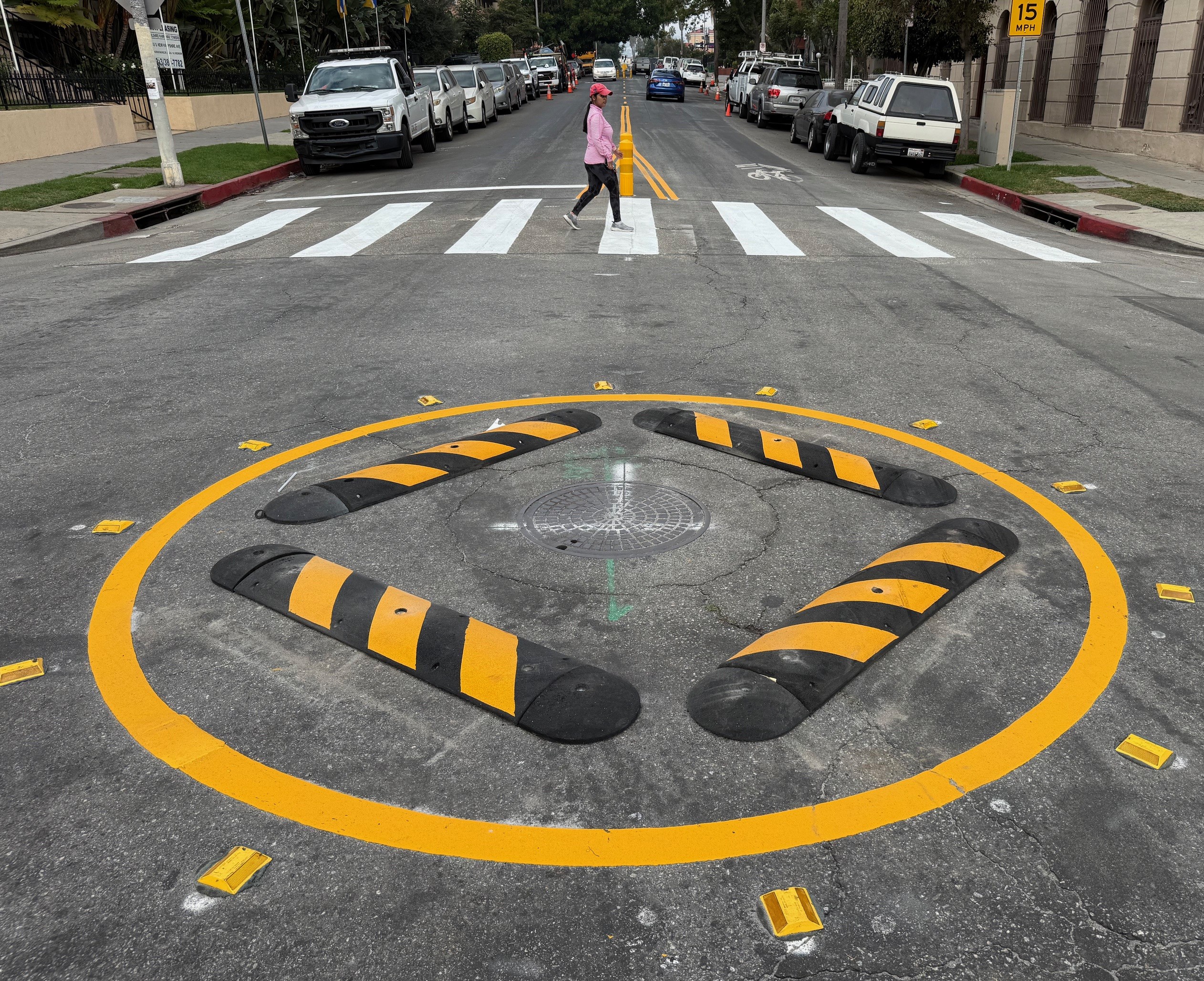
Why don’t women bike as much as men? It’s a question that’s been getting a lot of press for the last three years or so since the explosion of Women Bike onto the national advocacy scene. Only about 24 percent of bikes on the street have women’s butts on them. What’s going on?
The conventional wisdom is that women are just more risk-averse. The need to get more women biking is often mentioned as one of many reasons for building safe, protected bike infrastructure for all ability levels. The Bike League’s Women on a Roll report named five C’s of women biking: comfort, convenience, consumer products, confidence, and community. But they forgot one: Chores.
An article in last Friday’s Guardian by UCLA academics Kelcie Ralph and Herbie Huff has been clanging around in my head since I read it. The reason women make up more than half of cyclists in the Netherlands and less than a quarter here isn’t simply due to skittishness about biking in traffic, Ralph and Huff argue. It’s about household inequality, plain and simple.
“In short, despite years of progress, American women’s lives are still disproportionately filled with driving children around, getting groceries, and doing other household chores,” they write -- “housework that doesn’t lend itself easily to two-wheeled transportation.”
Transportation research in the United States focuses disproportionately on the “journey to work” because that’s the only trip we have Census data on. But the journey to work makes up only about 16 percent of all trips. According to a recent study by Ralph and her colleagues at UCLA and Rutgers, “travel for other, more domestic purposes -- shopping (21 percent), family errands (22 percent), and school/church (10 percent) -- collectively (53 percent) make up a much, much larger share of all personal travel.” And women make the lion’s share of those trips.
In families with opposite-sex parents, women make twice as many child-serving trips as men -- three times as many when the woman doesn’t work outside the home. But even when the woman works outside the home as many hours as her male partner, she makes 1.5 child-serving trips for every one the man makes.
Even single moms make 40 percent more child-serving trips than single dads -- and 82 percent of single parents are women.
The best way to bring equality to American bicycling is to bring equality to our household division of labor, Ralph and Huff argue -- and that will likely necessitate changes to our entire labor system. Paid paternity leave and a step back from a workaholic “always there” culture for professionals would be a big help.
And to that I say Yes Yes Yes A Million Times Yes.
But.
The bike advocacy movement has a role in this, too, and it's a whole lot easier than ending patriarchy. While Women Bike has become a rallying cry for the movement, family biking is still hardly a blip on the radar. The 24 percent statistic isn’t separated out by age, but I’d be willing to bet that 20-something women ride a lot more equally with men, but then stop abruptly when they have kids and take on more domestic duties. According to a recent survey, 60 percent of bike owners aged 17-28 are women.

Ralph’s study found that women drive for 92 percent of their child-serving and household-serving trips, but only for only 56 percent of their other trips. “Once you have to do any schlepping at all, it’s almost exclusively by automobile,” Ralph told me. But when they're not schlepping, women are more inclined to get out of their cars than men.
Acquainting parents -- of all genders -- with the how-tos of family biking could make a dent in that, at least among people who were used to biking before they had kids. And it could be downright revolutionary for women.
Still, leaders of Kidical Mass groups, which encourage and organize family bike rides, differ greatly on whether family biking belongs under the banner of Women Bike. To some, like Kidical Mass DC organizer Megan Odett, no women's biking program is complete without covering the family biking issue, since kids and domestic responsibilities are such a big part of why women don’t bike. To others, like Kidical Mass Arlington’s Gillian Burgess, to call family biking a women’s issue would deny the fact that family biking represents the one place where there is gender equity: Women make of half of all people biking with kids, and men emerge as leaders in Kidical Mass a whole lot more than in any other child-related activity.
Huff and Ralph had good reasons for focusing on deeper societal issues in their article. Clearly, dismantling gender inequality in the home will go farther toward dismantling gender inequality in bicycling -- and building a better world -- than just acquainting women with trailers and iBerts. “I never want to make the implication these are women’s problems, and that’s fine that they're women's problems, but let’s just get them a cargo bike,” Huff told me.
Plus, she said, “I’m speaking as a bike advocate when I say I think there’s a tendency to just focus on things that are ‘bike.’”
“I think the movement has gotten to a point where we start to touch things that are deeper and we have to go there to make progress,” Huff went on. “Race, gentrification and displacement, class -- these are other issues that the movement is coming up against, and they’re like ‘oh no, what are we supposed to do; that’s not biking.’ But it is."
Still, Huff and Ralph agree that finding ways to manage child-related and household chores by bike is key to getting more women biking. “A lot of the burden for women is the chauffeuring of children,” Ralph said, “so if you can get those kids biking independently, that’s easing a lot of their burden.”
So why isn’t the bike movement providing resources to people who want to manage their domestic responsibilities by bike? There’s hardly any information out there, so the default is just to drive. Where would you go with questions about what kind of gear you need, or how old your kid should be before you start, or if biking in traffic with a baby is just a crazy dangerous idea to begin with?
These aren’t questions just for women, but women are the ones who have the most to gain from learning how to manage a kid -- and diaper bags, and groceries, and library books -- on two wheels.
National bicycling groups have, in recent years, spent considerable energy trying to get more women to ride. But they have yet to invest in encouraging and training women how to schlep by bike.






